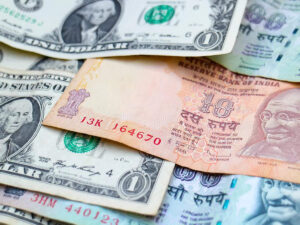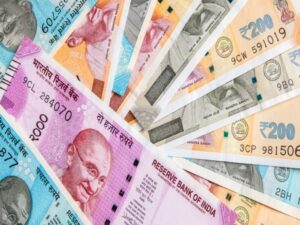MSMEs and Indian Culture: A recipe for growth, sustainability, self-Reliance
New Delhi [India], March 15 (ANI): Pisi Loon, a variety of flavoured salt ground with spices and endemic Himalayan herbs, is popularly consumed in households across Uttarakhand.
Seeing the potential and its palatability, some women-oriented small businesses and not-for-profit organizations in Uttarakhand have now started selling the Pahadi cuisine ingredient and its variants to other parts of the country as well. Moving to central India, we find that the Gond tribe of the Sarguja district of Chhattisgarh has brought innovation to Godna, their age-old practice of body tattooing. The tribe has transformed the Godna art by applying tattoo designs on clothing and apparel, leading to the emergence of new small-scale textile enterprises while preserving their unique traditional art.
Going further south, in Aranmula village of Kerala, one would find local artisans engaged in making the so-called magical mirror, made of an alloy metal without any silver coating for reflection. These are but an iota of the many local customs and traditions that provide micro, small, and medium (MSME) business & employment opportunities to millions in India.
Indian culture acts as the backbone for MSMEs in India. In turn, these micro and small businesses have two-fold importance in our economy – first, these enterprises preserve the age-old traditions by meeting local communities’ demand for cultural goods. Two, such culture goods-based MSMEs support local economies by providing jobs to the local communities across seasons.
MSMEs, while provisioning cultural goods, exhibits the amalgamation of cultures, economic growth, and sustainable practices. The sheer size of the population, its diversity in terms of beliefs and resulting tastes and preferences fuel the ever-rising demand for cultural goods in India. A chain of employment opportunities created by such demands leads to the extraction of locally available raw materials, manufacturing of cultural goods, and selling them in local retail markets and fairs. This land has something to offer to everyone. Using the plethora of quintessential cultural assets and regional peculiarities, small-scale businesses thrive in India by targeting highly differentiated and hyper-localised markets in a sustainable fashion.
First, the power of culture lies not just in providing a shared belief and practices to live and celebrate life; it also contributes profusely to the economic systems. The MSMEs in India have a strong regional and cultural embeddedness. Given the diversity of cultures, every region in India has its distinct food, textile, and craft, which generates demand for highly differentiated products that can be catered to by the micro and small businesses belonging to those regions. For instance, in the Hornbill festival observed in the north-eastern state of Nagaland, every participating tribe hasits own differentiated cultural goods, which provide business opportunities to many small enterprises.
Second, cultures and traditions, particularly followed in such a continental-sized country, are complex and nuanced. Only hyper-localised microeconomic activities can cater to the demands for commodities created by hyper-localised cultures. To give a flair, in Delhi’s Mehrauli region, an esoteric annual procession of florists called ‘Phool Walon Ki Sair’ is organised, in which large floral fans (Pankhas) are carried from an ancient Hindu temple to a medieval Sufi dargah. This legacy of the procession is not only a cultural testimony of the Ganga-Jamuni Tehzeeb of the region but also provides a unique business opportunity for manufacturers of rare floral fans used only for this event. It also exhibits communal harmony in festivity, the uniqueness of Indian culture.
Such nuanced needs of rare festivities observed by only specific and often by communities in the remote pockets of the country cannot be met by large-scale manufacturing systems characterised by assembly lines and product standardizations. Though India has been developing a strong mass production muscle as well, the presence of micro and small enterprises catering to highly differentiated cultural goods quenches the thirst for the people’s cultural needs.
Third, the economic system of production of cultural goods by local micro and small businesses is marked by significant self-sufficiency, self-reliance, and sustainability. Raw materials utilised in producing such goods are often locally sourced, and the extraction process is environmentally sustainable. The production is also highly labour intensive, sourcing local labour and that too involving high levels of the female workforce.
For instance, folk artists of Pattachitra, Madhubani, and Phad art forms in Odisha, Bihar, and Rajasthan regions rely on locally obtained natural dyes for colours and organic painting surfaces. These businesses contribute to creating self-reliant sustainable economies with large employment opportunities and the conservation of cultural heritage.
Another important aspect of micro and small enterprises is their dynamism in marketing their products. As mentioned, tribal entrepreneurs have brought innovation to their traditional art, as in the case of the use of textile-based Godna Art. Similarly, in Uttarakhand, enterprises are making different flavours of Pisi Loon to cater to a larger consumer base.
Realising the two-fold importance of these enterprises, in the recent budget of 2023-24, the Government of India has taken steps to establish a ‘Unity Mall’ in every state for the promotion and sale of ODOPs (One District, One Product), GI products and traditional products from other states. To facilitate Atmanirbhar Bharat (self-reliance), a package under PM VIKAS YOJANA has been announced to integrate the craftspeople with MSME value chains, enhancing their quality, scale and market reach.
Moreover, organisations like the Crafts Council of India, Tribes India, Saras by the Ministry of Rural Development, and state emporiums have always been in place to spread public awareness, provide cottage industries with larger markets and help them adapt to evolving needs.
The philosophy of ‘Make in India’ and the principles of ‘Atmanirbhar Bharat’ are organically embodied in the local cultural goods produced with age-old esoteric knowledge, skill sets and local labour supply. In continuation to fulfilling the hyper-local needs of the masses, the future goal for many of these micro-economic activities is to innovate and have an outward-looking role by going beyond their traditional markets. The diversity in culture and ethnicity are now propelling growth and prosperity, generating income and employment.








